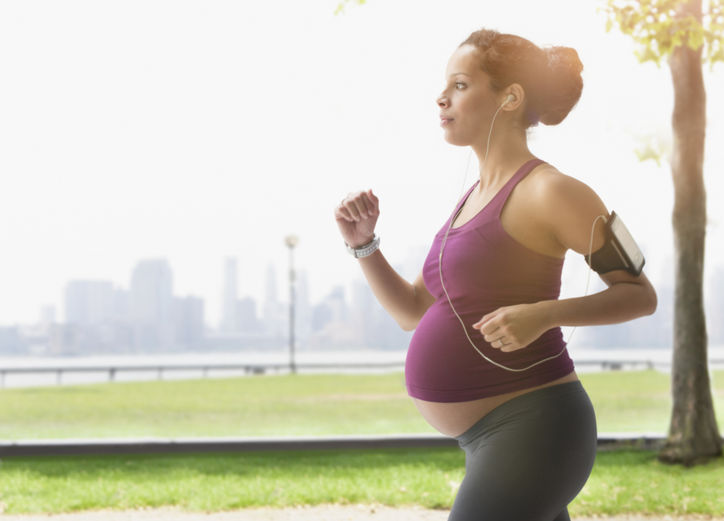
FYI: Pregnancy Isn’t the Best Time to Start Working On Crazy-Shredded Abs
Dr. Pari was featured as a guest contributor in the article below, originally posted for Glamour by Korin Miller.
Remember Sarah Stage, the fitness model who had insane abs during her pregnancy? Now, there’s another pregnant woman with muscles to rival hers.
Bodybuilder Stacie Venagro is 30 weeks pregnant and has abs that are more defined than most women who aren’t carrying a bun in the oven. But Venagro, 31, isn’t your average mom-to-be: She’s a three-time World Miss Fitness America Pro and winner of Miss Fitness Universe, so she kind of has a leg up on the rest of the pregnancy community.
Venagro has been tracking her growing belly and documenting her fitness routine on Instagram. And, we’ve got to say, we’re impressed.
But as we see more ripped pregnant women online, it makes us wonder: What’s the line between being really fit during your pregnancy and working out too much?
The American Congress of Obstetricians and Gynecologists has attempted to answer that question by providing the following guidelines for pregnant women:
Try to exercise at least 30 minutes a day, every day if possible.
The Congress recommends walking, swimming, cycling, and aerobics. And, if you were a runner before you became pregnant, they say you can keep running during your pregnancy.
Avoid activities with a high risk of falling like gymnastics, skiing (on water and snow), and horseback riding.
Contact sports are also a no-no, as are exercises that increase body heat like hot yoga and hot Pilates.
Try to avoid doing exercises on your back after your first trimester.
And…that’s pretty much it. That all sounds doable, but what about lifting weights and doing crunches on an exercise ball? And where do core exercises like planks fit in?
According to board-certified ob-gyn Pari Ghodsi, M.D., lying on your back for an extended period of time may cause a drop in blood pressure and blood flow to the baby, so it’s really not ideal to do crunches for several minutes. “I recommend planking over sit ups for this reason, as long as the mother will not lose her balance and fall during the plank,” she says.
But what about building new muscle during your pregnancy—is there any danger in that? While Ghodsi says it’s best to steer clear of heavy lifting, especially in the third trimester when you’re bigger and your spine is usually curved from the extra weight, building muscle in your lower back and quads can actually help support your pregnancy. (Ghodsi recommends using resistance bands instead of free weights since it’s a safer way to keep your muscles strong.)
As for women like Stage and Venagro, Ghodsi points out that they get a lot of attention because they don’t look like the majority of pregnant women. They’re not necessarily doing anything wrong, their bodies were just super fit before they got pregnant and they kept up with a modified fitness routine.
“Each person has a different baseline of fitness, so it is important not to compare,” Ghodsi says. Plus, every woman—and pregnancy—is different.
Wondering what’s best for you? Talk to your doctor…and listen to your body. Adds Ghodsi: “As long as the mom is gaining appropriate weight in the pregnancy and the baby is also growing, exercise is encouraged.”